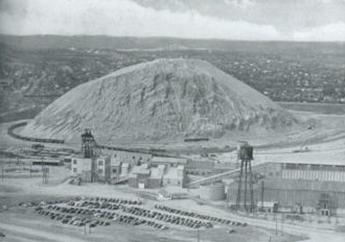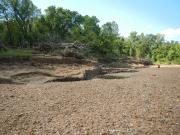


For over a century, Missouri has been, and continues to be, one of the leading national producers in lead. Some of the largest lead deposits in the world are located in southeast Missouri, an area known as the Southeast Missouri Lead Mining District (SEMOLMD). The district covers multiple counties, from 40 to 90 miles southwest of St. Louis, and is located within seven watersheds including the Meramec River, Big River, Black River and St. Francis River.
Lead has been mined in southeast Missouri since the early 1700s. The SEMOLMD includes the Old Lead Belt and the New Lead Belt, also referred to as the Viburnum Trend. With depleting ore reserves in the Old Lead Belt, early 1950s exploration for new lead and zinc deposits was implemented and the New Lead Belt was discovered. The Viburnum Trend sub-district is located south to southwest of the Old Lead Belt and east of the Tri-State Mining District. The Viburnum Trend continues active exploration and mining with several active lead mines.
Two former lead smelters historically operated in or near the SEMOLMD. The Herculaneum smelter, located south of St. Louis just outside the SEMOLMD, began smelting operations in the late 1800s. Before it closed in 2013, the Herculaneum smelter was the largest active primary lead smelter in the United States. The Glover smelter, located in the Viburnum Trend near Ironton, Missouri, operated from 1968 until the early 2000s. From 1968 to 1987, the Buick Resource Recycling Facility operated as a primary lead smelter in the Viburnum Trend near Boss, Missouri. This facility now operates as an active secondary lead smelter and is the largest secondary lead smelter in the world. For more information about the history of lead mining in Missouri, visit Lead in Missouri.




